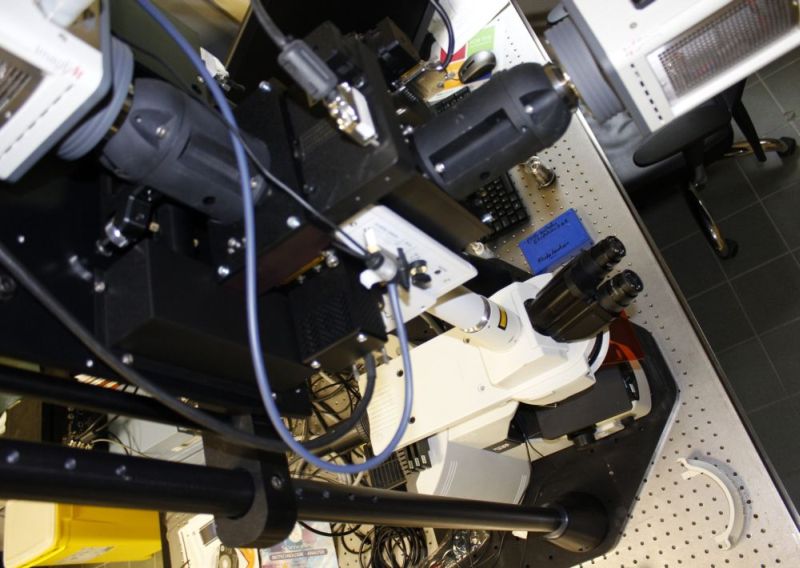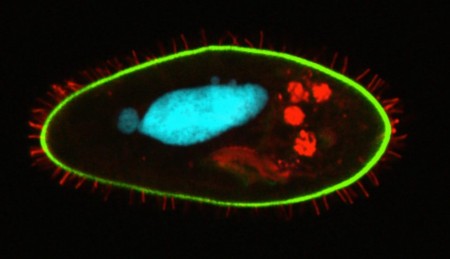 |
The ideal compromise between resolution and phototoxicity
|

 +33 5 61 55 75 93 +33 5 61 55 75 93
|
Spinning disk microscopes combine the speed of a wide-field microscope with the resolution of a confocal. In order to do so, this technique uses lasers to illuminate the samples and ultra-sensitive cameras to detect the fluorescent signal. Like a conventional confocal microscope, it can be used to observe thick samples with accuracy. Unlike a laser scanning confocal, the spinning disk illuminates the entire viewing area simultaneously, which reduces the acquisition time (routinely around 150 ms) and therefore the phototoxicity.

Drosophila imaged by spinning disk microscopyk
Services:
- XYZT acquisition in fluorescence and bright-field
- Multi-labeling
- Live 3D reconstruction
- Dual camera for simultaneous acquisition of 2 colors
Access mode:
- With assistance
- In autonomy (after training)
- As collaborative project
Microscopes “spinning-disk
Name
|
Characteristic techniques
|
Location
|
| Perkin Elmer, CSU X1 |
Upright microscope, 2 cameras |
FRAIB – Campus INRA Auzeville |
| Roper, CSU X1 |
Inverted, thermoregulated and CO2 controlled chamber, multipositions, FRAP, photoactivation with 375 nm laser, two camera |
Infinity – CHU Purpan |
| Andor, CSU 22 |
Inverted, 2 cameras, thermoregulated and CO2 controlled chamber, multipositions |
IBCG – Campus UPS |





